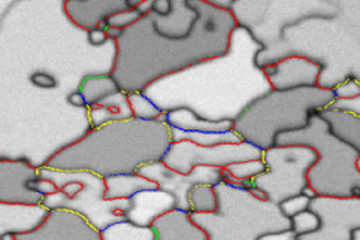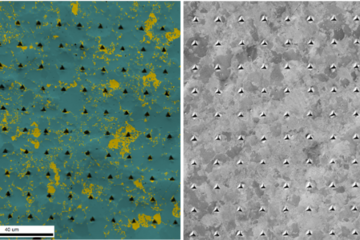All genres
1.
Journal Article
Combined structural analysis and cathodoluminescence investigations of single Pr3+-doped Ca2Nb3O10 nanosheets. Scientific Reports 13, 8055 (2023)
2.
Journal Article
Correlation between Structural Studies and the Cathodoluminescence of Individual Complex Niobate Particles. ACS Applied Electronic Materials 3 (1), pp. 461 - 467 (2021)
3.
Journal Article
Atomic Resolution Observation of the Oxidation of Niobium Nanowires: Implications for Renewable Energy Applications. ACS Applied Nano Materials 3 (9), pp. 9285 - 9292 (2020)
4.
Journal Article
How photocorrosion can trick you: a detailed study on low-bandgap Li doped CuO photocathodes for solar hydrogen production. Nanoscale 12 (14), pp. 7766 - 7775 (2020)
5.
Journal Article
Structural Evolution of Ni-Based Co-Catalysts on [Ca2Nb3O10]− Nanosheets during Heating and Their Photocatalytic Properties. Catalysts 10 (1), 13 (2020)
6.
Journal Article
Functional Engineering of Perovskite Nanosheets: Impact of Lead Substitution on Exfoliation in the Solid Solution RbCa2–xPbxNb3O10. Zeitschrift für anorganische und allgemeine Chemie 643 (21), pp. 1668 - 1680 (2017)
7.
Journal Article
A New Fabrication Method for Single‐Layer Nanosheets by Silver‐Assisted Exfoliation. ChemNanoMat 3 (6), pp. 411 - 414 (2017)
8.
Journal Article
Titanium Doping and Its Effect on the Morphology of Three-Dimensional Hierarchical Nb3O7(OH) Nanostructures for Enhanced Light-Induced Water Splitting. Chemistry of Materials 28 (21), pp. 7666 - 7672 (2016)
9.
Journal Article
Band gap extraction from individual two-dimensional perovskite nanosheets using valence electron energy loss spectroscopy. The Journal of Physical Chemistry C 120 (20), pp. 11170 - 11179 (2016)
10.
Talk
Photocatalysts, cocatalysts, and a case study on their structural design. 1st International Meeting on Alternative & Green Energies, Mohammedia, Morocco (2018)
11.
Talk
In-situ heating study on the growth of NiOx nanoparticles on photocatalytic supports. International GRK 1896 Satellite Symposium “In Situ Microscopy with Electrons, X-rays and Scanning Probes, Erlangen, Germany (2017)
12.
Poster
NiOx cocatalysts on nanosheets for photocatalytic water splitting. nanoGe Fall Meeting 2018, Torremolinos, Spain (2018)
13.
Thesis - Master
Synthesis Approaches to Nb3O7(OH) Nanostructures and New Studies on Their Growth Mechanism. Master, Ludwig-Maximilians-Universität, München, Germany (2018)











